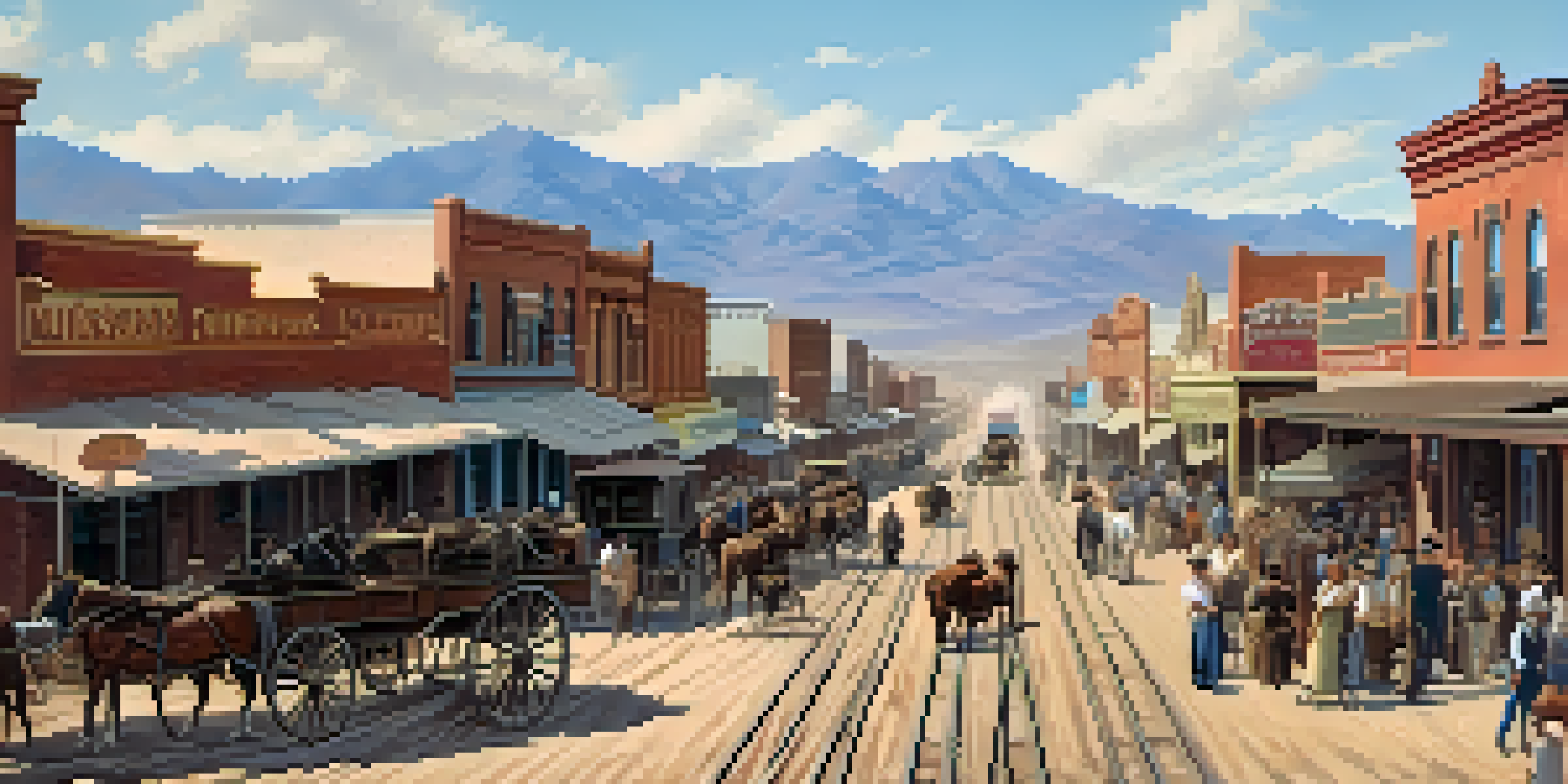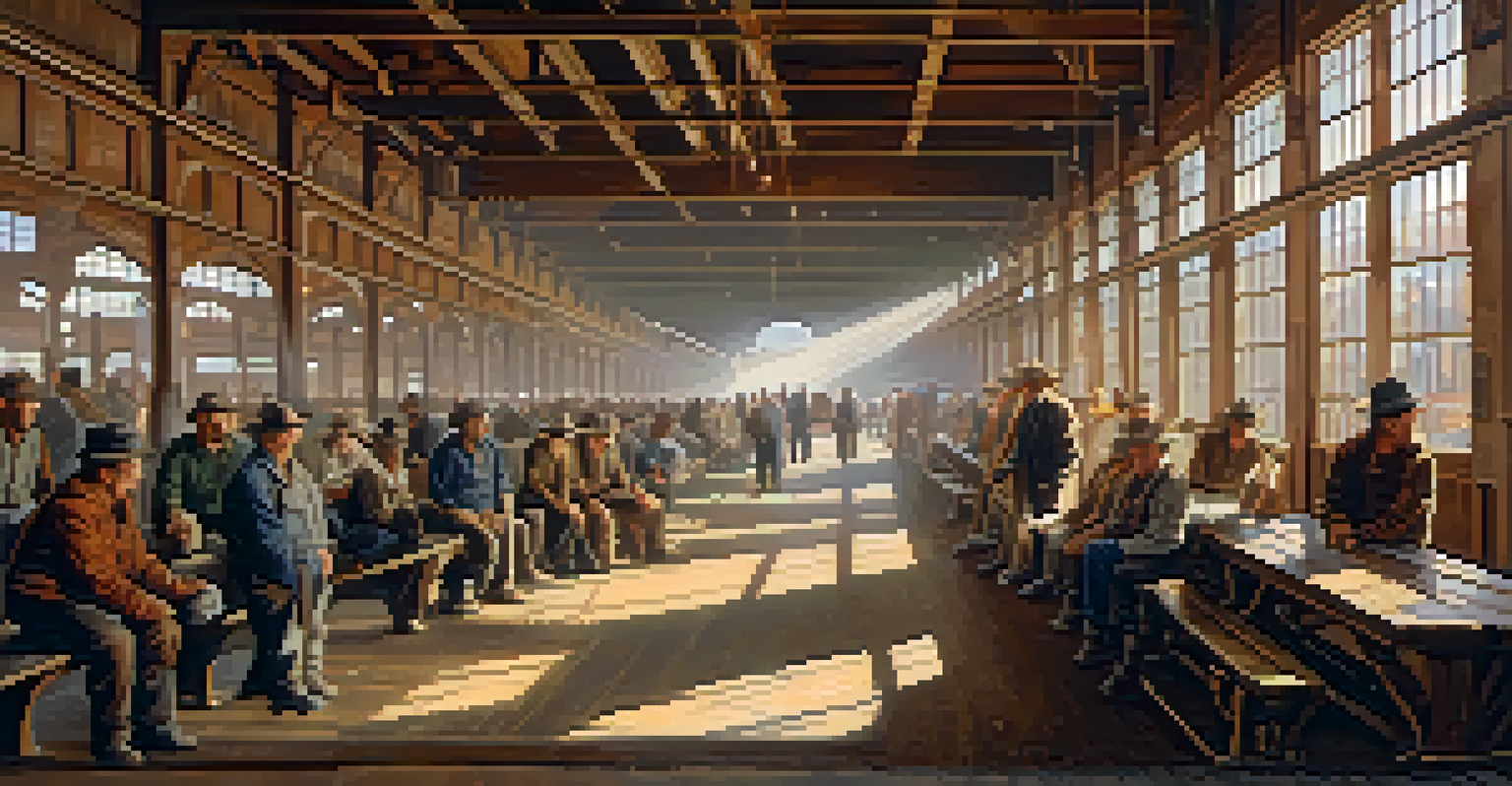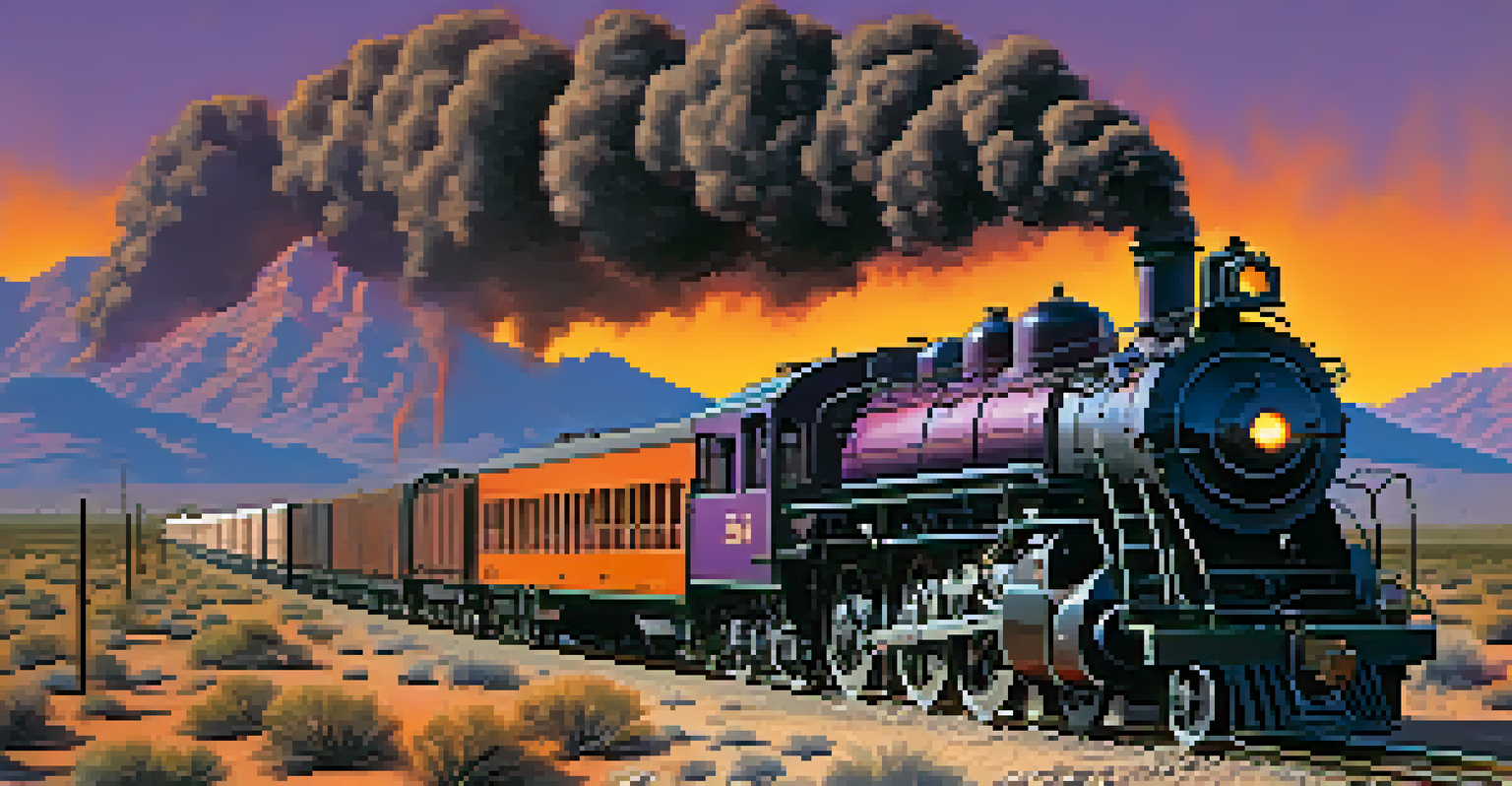The Role of Railroads in Tucson's Mining Industry

The Early Days: Tucson's Mining Boom
In the late 19th century, Tucson began to emerge as a key player in the mining industry. The discovery of valuable minerals, particularly silver and copper, attracted miners and entrepreneurs to the region. This influx of people created a bustling economy centered around mining, which needed efficient transportation to thrive.
The railroad is a great, an important, and a necessary thing; it opens up the country, and no one should oppose it.
Railroads soon became the lifeline for Tucson's mining sector, providing a crucial link between remote mining sites and markets. Before railroads, transporting ore was a labor-intensive process, often relying on horse-drawn wagons. The arrival of the railroad dramatically reduced transportation costs and time, enabling mining companies to operate more effectively.
As a result, Tucson's economy began to flourish, with railroads facilitating not just the movement of ore but also the influx of goods and services necessary for mining operations. This symbiotic relationship between railroads and mining laid the groundwork for Tucson's growth as a mining hub in the Southwest.
Connecting Mines to Markets: The Railroad Advantage
The construction of railroads allowed Tucson's mining companies to reach broader markets, turning local resources into economic powerhouses. With the ability to transport large quantities of minerals quickly, companies could capitalize on rising demand, especially during industrial booms. This access to markets was essential for the profitability of mining operations.

Railroads like the Southern Pacific enabled the swift movement of ore to processing facilities and then on to consumers. This not only increased revenues for mining companies but also stimulated job creation in both the mining and railroad sectors. The entire supply chain became more efficient, benefiting the local economy.
Railroads Fueled Mining Growth
The construction of railroads in Tucson significantly enhanced the mining industry's efficiency by providing essential transportation for minerals and resources.
Moreover, railroads facilitated the importation of machinery and skilled labor necessary for modern mining techniques. The convergence of these factors accelerated Tucson's economic development, underscoring the critical role of railroads in the success of the mining industry.
Infrastructure Development: Building Tucson
The expansion of railroads in Tucson led to significant infrastructure development, transforming the city into a vibrant commercial hub. As rail lines extended, they prompted the construction of warehouses, offices, and residential areas to accommodate the growing population involved in mining and related industries. This urban growth was directly tied to the accessibility that railroads provided.
The mining industry, like the railroads, is a vital part of our economy that drives innovation and creates jobs.
With improved infrastructure, Tucson began to attract more businesses and investments, further cementing its status as a mining center. The availability of transportation options meant that goods could be imported and exported more easily, which encouraged local entrepreneurship. Over time, Tucson evolved from a small frontier town to a thriving city.
The railroad's influence on infrastructure extended beyond commercial development; it also improved public services. Enhanced transportation routes facilitated better access to education and healthcare, contributing to an overall improvement in the quality of life for Tucson's residents.
Challenges Faced by the Railroad-Mining Connection
Despite the many benefits of railroads to Tucson's mining industry, challenges were also prevalent. The harsh desert environment posed difficulties for railroad construction and maintenance, leading to delays and increased costs. Additionally, the volatile nature of mining, with its boom-and-bust cycles, often affected the financial stability of railroad companies.
Moreover, conflicts sometimes arose between mining companies and railroad operators over freight rates and transportation priorities. These disputes could hinder the timely delivery of essential supplies and ore shipments, which in turn affected the profitability of mining operations. Such challenges highlighted the delicate balance between the two industries.
Infrastructure Transformed Tucson
The expansion of railroads led to substantial infrastructure development in Tucson, turning it into a vibrant commercial hub and improving public services.
Despite these obstacles, the partnership between railroads and mining in Tucson persevered. Both industries learned to adapt and innovate, ensuring that they could continue to thrive together, even amid adversity.
Technological Advancements and Their Impact
As the railroad industry evolved, so did the technology used in both rail transport and mining operations. Innovations such as steam locomotives and later diesel engines allowed for heavier and faster transport of minerals. These advancements not only increased efficiency but also enabled the mining industry to operate on a larger scale.
In tandem, mining technology improved significantly, with new extraction techniques and equipment enhancing productivity. The railroads played a vital role in facilitating the movement of this advanced machinery to mining sites, which was crucial for maximizing ore recovery. This interdependence fueled further growth in both sectors.
Additionally, technological improvements in rail infrastructure, such as better tracks and signaling systems, contributed to safer and more reliable transport. This mutual enhancement of technology allowed Tucson's mining industry to remain competitive and adapt to changing market demands.
The Decline of Mining and Its Effects on Railroads
By the mid-20th century, Tucson's mining industry began to decline due to various factors, including the depletion of easily accessible minerals and fluctuating market prices. This downturn had significant repercussions for the railroad network that had thrived on mining revenues. As mines closed, freight traffic diminished, leading to reduced income for railroad companies.
Many railroads were forced to adapt by diversifying their services or seeking new markets to remain viable. This shift often involved expanding into other industries, such as agriculture or tourism, to fill the void left by declining mining operations. However, the change was not always smooth, and some railroads faced financial hardships during this transition.
Decline Impacted Both Industries
The decline of Tucson's mining industry in the mid-20th century resulted in reduced freight traffic for railroads, highlighting their interconnectedness.
Ultimately, the decline of the mining industry in Tucson underscored the interconnectedness of these two sectors. While railroads originally flourished through mining, their ability to pivot and innovate became crucial for long-term survival in an evolving economic landscape.
Legacy of Railroads in Tucson's Mining History
Today, the legacy of railroads in Tucson's mining industry can still be felt throughout the region. Many of the railroad lines established during the mining boom have been preserved, serving as a reminder of the city's rich history. These historical routes have often been repurposed for recreational use, such as biking and hiking trails, promoting tourism and local engagement.
Moreover, the stories of the miners and railroad workers who shaped Tucson's past are celebrated in local museums and cultural events. This heritage not only honors their contributions but also educates future generations about the importance of these industries in the region's development.

The interplay between railroads and mining has left an indelible mark on Tucson's identity, showcasing how infrastructure can drive economic growth and community development. As Tucson continues to evolve, the lessons learned from this historical relationship remain relevant in shaping its future.